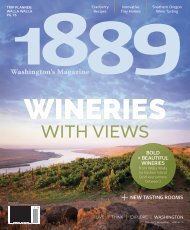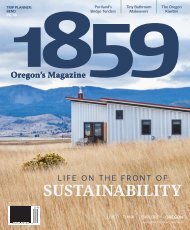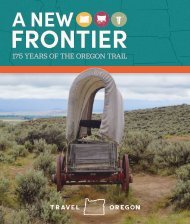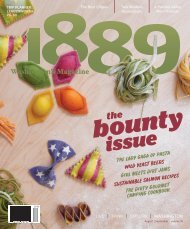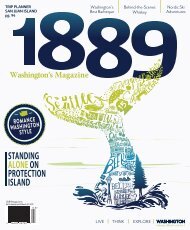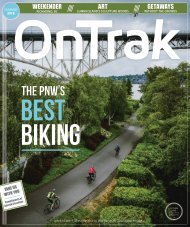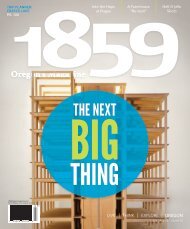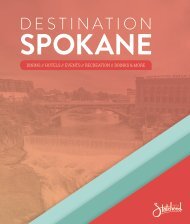Create successful ePaper yourself
Turn your PDF publications into a flip-book with our unique Google optimized e-Paper software.
The Fair’s commissioner originally<br />
planned to hold a “Festival of the West,”<br />
but after the Russians launched Sputnik in<br />
1957, instead adopted a science and technology<br />
focus. It was a turbulent time for<br />
America—the country was in the throes of<br />
the Cold War, with the Vietnam War heating<br />
up.<br />
Skepticism surrounded the World’s Fair<br />
and the Space Needle. The community was<br />
not enthusiastic; the Fair’s public relations<br />
department reported “widespread public<br />
apathy in many areas and even outright<br />
opposition to the Fair in Seattle.” Alfred<br />
Schweppe, an attorney and former dean of<br />
the University of Washington’s School of<br />
Law, even filed a lawsuit to stop it.<br />
Others saw this World’s Fair as America’s<br />
moment to shine as a leader in aerospace<br />
and science. The post-World War II fairs<br />
around the globe were becoming a thing<br />
of the past, as the age of televisions and<br />
airplanes changed society. But the Space<br />
Needle was a patriotic business gamble,<br />
and Seattle has never looked back. Ticket<br />
sales soared as more than 9.5 million visitors<br />
flocked to Seattle's new Space Needle<br />
and monorail. The World’s Fair paid off its<br />
private investors in just three months.<br />
Museum of History and Industry, Seattle<br />
The fair's commissioner originally<br />
planned to hold a "Festival of the West,"<br />
but after the Russians launched Sputnik<br />
in 1957, instead adopted a science and<br />
technology focus.<br />
44 | WINTER <strong>2018</strong><br />
ontrakmag.com




